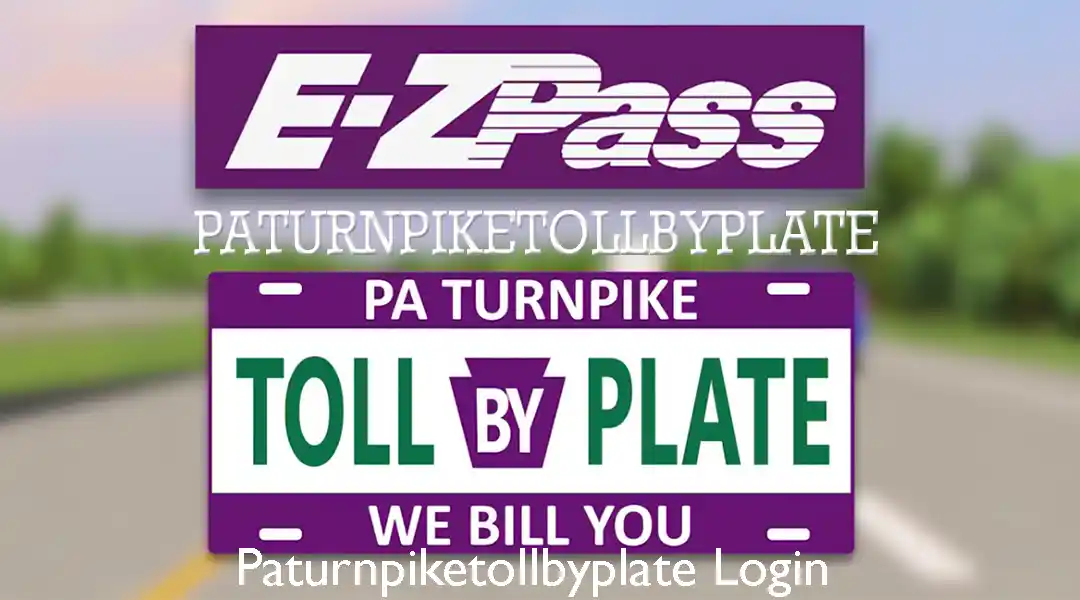Edu
How to Start a Paragraph in an Essay

Table of Contents
Starting a new paragraph is an important part of writing an essay. The beginning of each new paragraph signals to the reader that you are moving on to a new idea or a new step in your argument. Embark on a strong essay paragraph by capturing the reader’s attention with a compelling opening, and if you find yourself pressed for time, consider the positive option of seeking assistance from someone to do my homework, ensuring a well-balanced academic approach. There are a few key things to keep in mind when starting a new paragraph in an essay.
Use Transition Sentences
One of the most important aspects of starting a new paragraph is using transition sentences and phrases to connect the new paragraph back to the previous one. This helps create a natural flow and cohesion throughout the essay.
Some examples of good transition words and phrases to start a new paragraph include:
- Additionally
- Consequently
- However
- On the other hand
- In contrast
- Similarly
- Therefore
- For example
- In other words
- To illustrate
A transition sentence might read:
“However, not everyone agrees with this viewpoint. Some experts have offered compelling counterarguments.”
This makes it clear to the reader that you are now going to present a different perspective from the one discussed in the previous paragraph.
Introduce the New Topic
In addition to using transition words, it’s important that the first sentence of the new paragraph actually introduces the new topic or idea that paragraph will address. This helps orient the reader to what you will be discussing next. Initiate an impactful essay paragraph by creating a captivating introduction that sets the tone for your argument, and for those seeking additional support, exploring reputable resources like best essay writing services can be a positive choice, ensuring a well-structured and expertly written piece.
For example, you may write:
“Another important factor to consider is the financial costs of this proposal.”
Or
“Turning to the historical record reveals further context for this debate.”
These introductory sentences let the reader know what to expect in the new paragraph.
Link Back to Your Thesis
An effective way to start a new paragraph is to open with a sentence that links back to your overall thesis or argument.
For example, if your thesis is about the benefits of space exploration, you could start a new paragraph like this:
“Given the enormous scientific and technological gains to be had from space exploration, investing more resources in NASA should be a top priority.”
Reminding the reader of your central argument helps reinforce why you are now providing more detail on a particular point.
Address Counterarguments
When structuring an essay, addressing counterarguments or opposing viewpoints is often done in a new paragraph. Introduce the counterargument clearly at the start of the paragraph so the reader immediately understands that you are acknowledging other perspectives.
For example:
“While some believe that funding for the arts should be cut due to budget restrictions, there are compelling reasons why the arts remain an essential investment.”
This transitions the reader from your argument to the counterargument.
Start with a Rhetorical Question
Starting a paragraph with a rhetorical question that relates back to your thesis is an effective way to pique the reader’s interest. The question should be thought-provoking but not too ambiguous.
For example:
“When it comes to the topic of school uniforms, should individuality be sacrificed for the sake of adherence to school rules and policies?”
This invites the reader to think critically about your topic at the start of the paragraph.
Use a Relevant Quotation
Starting with a strong, meaningful quote from an expert or relevant public figure can help draw the reader into the new topic. Ensure the quote directly relates to the point you want to make in the paragraph.
For example:
“As the famous education reformer Horace Mann once said, ‘Education…beyond all other devices of human origin, is the great equalizer of the conditions of men.'”
Quotes like this add voices other than your own into your essay while transitioning between ideas.
Start with an Anecdote or Example
An anecdote or real-world example that illustrates the topic of your new paragraph can serve as an engaging lead-in. Be sure the example directly establishes the relevance to your essay topic and argument.
For instance, if your essay is about the prevalence of fast fashion, you may start a paragraph like this:
“British consumers spent about 2.7 billion pounds on clothing that they wore just once in 2019.”
This staggering statistic points to the growing problem of overconsumption in the era of fast fashion.”
Vivid examples like these make your essay more lively while introducing new points.
Additional Tips for Starting Paragraphs
Beyond the basic techniques, there are additional tips that can help strengthen your paragraph openings even further:
- Vary sentence structure. Try starting some paragraphs with short, punchy sentences and others with longer, more complex constructions. This adds diversity to your writing style.
- Use literary devices like alliteration, assonance, and consonance to make opening sentences more unique and memorable. For example: “Supporters stay stubbornly steadfast in stressing that space station studies remain significantly substantial.”
- Avoid filler words and phrases like “First and foremost” or “To begin with.” Strive for meaningful, purposeful openers.
- Consider starting a paragraph with dialogue if appropriate. For instance: “Let’s turn this debate on its head,” proposed the professor. “Instead of focusing on problems, how can we bring out new possibilities?”
- Try beginning a paragraph with a word that summarizes the point of the paragraph, like “Equality,” “Evidence,” or “Efficiency.” This technique creates strong alignment between topic sentences and opening words.
- Don’t feel restricted to starting every paragraph in the exact same way. Varying your approach strategically adds diversity.
- Use vivid imagery or metaphors when suited to your topic. For example: “A tide of technological innovation is surging over the modern workforce, irrevocably reshaping job landscapes.”
With practice and some creativity, your paragraph openings will become more dynamic, coherent, and engaging. Your introductory sentences set the stage for presenting compelling evidence, analysis, and discussion within each paragraph.
Paragraph Length and Organization
Now that we’ve explored techniques for starting strong opening sentences, what should you consider when structuring the rest of the paragraph? Here are some key tips:
Keep Paragraphs Reasonably Short
A good guideline is to aim for 3-8 sentences per paragraph. Paragraphs that drag on for too long can lose the reader’s attention and seem unfocused. On the flip side, 1-2 sentence paragraphs may disrupt the flow. Stick to a reasonable length that keeps the reader engaged. Varying paragraph length also adds some nice rhythm.
Develop a Unified Point
Each paragraph should have a central, unified point that aligns with your broader essay thesis and argument. The rest of the sentences in the paragraph should support this central point.
Use Transition Words and Phrases
Transition words like “however,” “therefore,” and “similarly” should be used judiciously within paragraphs to show connections between sentences and concepts.
End with a Concluding Sentence
Wrap up the paragraph by reinforcing the central point or transitioning to the next key idea in a concluding sentence. This provides closure to each paragraph.
Organize Logically and Linearly
Paragraph order should follow a logical progression to build your argument step-by-step. Like building blocks, each paragraph should stack and link.
Link Back to Thesis
However subtly, paragraphs should connect back to the main thesis to remind the reader of your core argument. Don’t allow paragraphs to become too detached.
Proper paragraph length, organization, and transitions result in seamlessly flowing writing. Now let’s look at concluding an essay effectively.
Ending the Essay Strongly
The conclusion is your last chance to drive home your main points and leave a powerful impression on the reader. Here are some strategies for ending an essay strongly:
Summarize Key Points
Briefly sum up your major points without simply repeating what you already wrote. Show how they have proven your thesis statement. This reminds readers of your core message.
Close with a Call to Action
End by inspiring your readers to learn or do more. For example, “Let’s prioritize education funding to uplift our nation,” or “We must reconsider how our eating habits impact the environment.” This rallies readers.
Include a Provocative Question
Leave the reader thinking deeply with an open-ended question. For example, an essay on artificial intelligence could end with “What does the dawn of thinking machines mean for what makes us human?”
Look to the Future
Speculate on the implications going forward based on what you argued. For example, “If more students get support early on, graduation rates will improve and economies prosper.” This underscores importance.
Return to Your Opening Scene
If you started with an anecdote, echo it in your conclusion. For example, “Just as my family learned, when we come together to mutually support and understand each other, there is no limit to our capacity for growth.”
Synthesize, Don’t Summarize
The conclusion should connect ideas and synthesize main points, not just rerun summaries. End by combining key threads to offer new insight.
In summary, strong essay conclusions reinforce your thesis statement and main ideas without redundancy. Aim to leave readers feeling that your perspective has been compellingly conveyed from start to finish. With cohesion and proper planning, your essay conclusion can leave a powerful lasting impression.
Edu
BetterThisFacts: Your Go-To Source for Quick and Reliable Information
Table of Contents
In today’s fast-paced digital world, people are constantly looking for quick, reliable information. BetterThisFacts is a platform designed to provide short yet accurate facts on a variety of topics. Whether you’re a student, professional, or just someone curious about the world, this platform helps you access well-researched facts in a simple and engaging way.
The main goal of BetterThisFacts is to make knowledge easy to understand and accessible to everyone. The platform ensures that each fact is clear, concise, and verified for accuracy. It is designed for people who love learning but may not have the time to read long articles or books. Instead, they can quickly get key information on various subjects.
What Kind of Content Does BetterThisFacts Offer?
One of the key strengths of BetterThisFacts is its diverse range of topics. The platform provides valuable information in several categories, including:
- Science: Covers interesting facts about biology, physics, chemistry, space, and more.
- Technology: Explains innovations, gadgets, artificial intelligence, and emerging trends.
- Health and Wellness: Provides useful tips on nutrition, mental health, fitness, and disease prevention.
- Personal Development: Shares strategies for self-improvement, productivity, and career growth.
Each fact is presented in a short and simple way, making it easy for readers to quickly grasp the information. Instead of long paragraphs or complex explanations, BetterThisFacts keeps it straightforward and engaging.
How Does BetterThisFacts Ensure Accuracy?
With so much misinformation on the internet, it is important to get facts from a reliable source. BetterThisFacts takes accuracy seriously by using a strict verification process:
- Expert Involvement – Many of the facts are checked by professionals and researchers in the relevant fields.
- Algorithm-Based Fact-Checking – The platform uses technology to scan and cross-check information from reputable sources.
- Transparent Sources – Whenever possible, the facts include references to the original research or data.
This approach ensures that readers can trust the facts they find on BetterThisFacts. It also helps prevent the spread of false or misleading information.
Features That Make BetterThisFacts User-Friendly
BetterThisFacts is designed to be easy to use for anyone, whether they are searching for a specific fact or just browsing for interesting information. Some of the key features include:
- Simple Interface – The website is clean and well-organized, making it easy to navigate.
- Bite-Sized Facts – Each fact is kept short and to the point, making it perfect for quick reading.
- Search Function – Users can quickly find information on specific topics.
- Visual Content – Many facts include images, infographics, or short videos to make learning more engaging.
Because of these features, BetterThisFacts is an excellent resource for learning without spending too much time reading long articles.
Educational and Practical Uses of BetterThisFacts
The platform is not just for casual reading—it can also be useful for education and professional development. Different groups of people can benefit from using BetterThisFacts:
- Students: A great tool for learning new things in a simple way. It can also help with research projects.
- Professionals: Keeps them updated with the latest trends in their fields without requiring them to read lengthy reports.
- Lifelong Learners: Perfect for those who enjoy learning new facts every day.
Because the content is regularly updated, users can always find new and interesting information.
How BetterThisFacts Engages Its Community
BetterThisFacts is not just a website—it also has an active community. It encourages user engagement through:
- Social Media – The platform shares facts on different social media channels, allowing users to like, comment, and share.
- Interactive Features – Some facts include polls, quizzes, or discussions to keep readers engaged.
- Collaboration with Experts – Experts in various fields contribute to the platform, ensuring high-quality content.
These features help make learning more interactive and enjoyable.
Advantages of Using BetterThisFacts
There are many reasons why BetterThisFacts is a great platform for learning. Some of the main benefits include:
Accurate Information – The facts are checked and verified before being published.
Time-Saving – Users can quickly learn something new in just a few seconds.
Wide Range of Topics – Covers science, technology, health, personal growth, and more.
Easy to Understand – Facts are written in a simple way, avoiding complicated explanations.
Because of these benefits, the platform appeals to a broad audience, from students to working professionals and lifelong learners.
Criticisms and Areas for Improvement
While BetterThisFacts is an excellent resource, no platform is perfect. Some areas where it could improve include:
- More In-Depth Explanations – Some users may prefer longer explanations instead of just short facts.
- Expanding to More Niche Topics – While the platform covers a lot of subjects, it could include more specialized or rare topics.
- Community Contributions – Allowing users to submit and verify facts could make the platform even more engaging.
By addressing these areas, BetterThisFacts can become even more valuable to its users.
Conclusion: Why BetterThisFacts is a Great Learning Resource
In summary, BetterThisFacts is a highly useful platform for anyone who enjoys learning in a quick and simple way. With its commitment to accuracy, diverse range of topics, and user-friendly design, it serves as an excellent source of reliable information. Whether you are a student, a professional, or just someone curious about the world, BetterThisFacts makes learning easy, engaging, and accessible.
As the platform continues to grow, it has the potential to expand its content, improve interactivity, and reach an even larger audience. If you’re looking for a place to get interesting and trustworthy facts every day, BetterThisFacts is definitely worth exploring!
FAQs
How often is BetterThisFacts updated?
The platform is updated regularly, ensuring fresh and accurate facts are added frequently.
Can users contribute their own facts?
Currently, only verified experts and editors contribute, but user suggestions may be considered in the future.
Does BetterThisFacts provide sources for its facts?
Yes, many facts include references to credible sources for transparency and reliability.
Is BetterThisFacts available in multiple languages?
As of now, it primarily provides content in English, but expansion to other languages is possible.
Can I use BetterThisFacts for academic research?
Yes, but it’s recommended to cross-check sources, as the platform provides summarized information.
Edu
The Importance of Educational Toddler Activities for Daycare Centers

Table of Contents
Do you know the importance of educational toddler activities for daycare centers? As parents and caregivers, it’s crucial to understand how these activities can benefit our little ones.
Not only do they provide a fun and engaging way for toddlers to learn. They also aid in their overall development.
In this article, we will explore the importance of incorporating educational activities into daycare centers. We’ll discuss how it can positively impact our children’s growth and well-being.
Let’s dive in!
Cognitive Development
Educational toddler activities can greatly enhance cognitive development in young children. These activities:
- stimulate their senses
- encourage critical skills
- promote creativity
Through hands-on experiences, little ones can explore the world around them. They can make connections between different concepts. This not only expands their knowledge. It also improves their memory and concentration.
Language Development
Toddlers are at a critical stage of language development. Educational activities can greatly aid in this process. Children can improve their vocabulary, sentence structure, and communication skills. This can be achieved by engaging in the best educational activities such as storytelling, singing, and playing with language-based toys.
These activities also provide opportunities for toddlers to practice social interactions. It allows them to develop their understanding of emotions. Plus, it helps them express their thoughts and feelings.
Socialization Skills
Daycare centers are a great place for toddlers to socialize and interact with their peers. By participating in educational activities together, children learn how to:
- take turns with others
- Share with others
- work cooperatively with others
These skills are essential for building positive relationships and preparing children for future social situations. Whether you are sending your kids to a toddler day care in Brooklyn or any other location, the socialization aspect of educational activities is crucial for their overall development.
Fine and Gross Motor Skills
Many educational activities involve hands-on tasks or physical movement. This can improve fine and gross motor skills in toddlers. By practicing these skills, children develop better:
- coordination
- balance
- control
They can then have better body movements. This is not only important for their physical development. It is also for their academic growth as they will need good motor skills to:
- hold a pencil
- write
- perform other school-related tasks
Preparation for School Readiness
Apart from the immediate benefits, educational activities in daycare centers can also prepare toddlers for a smoother transition into formal schooling. By engaging in fun and educational activities, children can develop a love for learning. This is essential for academic success.
These activities also lay the foundation for important skills such as:
- following instructions
- problem-solving
- critical thinking
All of these are needed in school. Plus, children who have been exposed to a variety of educational activities are more likely to adapt well to new learning environments.
Early Learning Foundation
Incorporating educational activities into daycare centers helps to establish a strong early learning foundation for children. Early childhood education experts agree that the first five years of a child’s life are crucial. This is where they are shaping their future development.
We can set them up for success in various aspects of their lives. This can be done by providing opportunities for toddlers to engage in educational activities. These activities can also inspire a love for learning that can last a lifetime.
Cultural and Diversity Awareness
In today’s society, diversity and cultural awareness are more important than ever. Educational activities in daycare centers can expose toddlers to different cultures and traditions. This helps them develop empathy and understanding towards others.
It also allows children to learn about themselves and their own cultural identity. By celebrating diversity through educational activities, we can raise more inclusive and accepting individuals.
Moreover, these activities can also teach children about the world around them. They can learn about different:
- countries
- languages
- customs
This broadens their understanding of the world and fosters their curiosity. Plus, it promotes open-mindedness and helps them become global citizens.
Parent Engagement
Educational activities in daycare centers not only benefit children. It also involves parents. Many daycare centers encourage parental involvement in these activities. This allows caregivers and parents to work together towards the child’s development.
By participating in these activities, parents can also learn new ways to engage with their children at home. They can understand what their child is learning and how they are developing.
It also provides an opportunity for parents to bond with their children and create special memories. Moreover, it can also foster a sense of community and support among parents in the daycare center.
Health and Well-being
Educational activities in daycare centers also promote physical health and well-being in young children. Toddlers can develop strong muscles and bones. This can be achieved by engaging in active play and movement-based activities. This helps improve their overall physical fitness and decreases the risk of obesity.
These activities also promote mental well-being by reducing stress and anxiety in children. It allows them to release their energy positively and productively.
Environmental Awareness
Through educational activities, children can also learn about the environment. They get to learn about the importance of sustainability. This helps foster a sense of responsibility towards our planet from a young age. Toddlers can learn how to:
- care for plants
- reduce waste
- make eco-friendly choices
Moreover, these activities also encourage environmental exploration and curiosity. Children can learn about different:
- animals
- ecosystems
- natural phenomena
This lays the foundation for future learning and understanding of environmental issues. Plus, it can also inspire a love for nature and the outdoors.
Emotional Development
Educational activities in daycare centers play a crucial role in the emotional development of young children. Toddlers can learn how to identify and manage their emotions. This is important for building self-awareness and emotional intelligence.
These activities provide a safe space for children. This is where they can express their feelings and practice coping strategies. It also allows them to develop empathy. Thus, have a better understanding of others’ emotions.
Educational Toddler Activities for Daycare Centers Are Essential
Incorporating educational activities for daycare centers is crucial for the growth and development of our children. These activities not only provide a fun and engaging way to learn. It also comes with numerous benefits.
As parents and caregivers, it’s important to prioritize these activities in our children’s daily routines to set them up for a successful future. So let’s get creative and have fun while helping our little ones learn and grow!
Edu
How a Masters Degree Bridges the Age Gap for Younger Managers in Tech

Table of Contents
The technology industry moves at a lightning-fast pace, which often propels younger professionals into management roles. However, the age gap between younger managers and their more experienced subordinates can present unique challenges.
One way to bridge this gap is by obtaining a master’s degree. This academic credential can provide the edge needed for younger managers to earn the respect and trust necessary to lead effectively in the tech world.
Credibility and Expertise
A master’s degree shows you know a lot. It tells people you studied hard and understand your job well. When younger managers have a Master’s, older workers can see them as smart leaders. It helps in tech jobs where things change fast.
One good school for this degree is Notre Dame de Namur University. This school teaches a lot about technology and being a boss. Going to this school can make you a better leader.
Leadership and Soft Skills
Being a good leader is not just about knowing stuff. It’s also about being good with people. You need to listen, talk nicely, and solve problems. These are called soft skills. Soft skills help you work well with others. They make people feel good working with you.
When you’re a boss, soft skills are super important. You also get better at these skills by practicing them. Going to school for a master’s can help with this. You learn how to be a better listener and solve team problems. This is part of skill enhancement. It makes you a strong leader.
Career Advancement
Getting a Master’s helps you move up in your job. It’s like a big key that opens doors to new places in your career. With this degree, you can become a big boss or get a job that pays more money. It shows you’re ready for more responsibility.
Also, companies like to see you have a master’s because it means you know a lot and can handle tough jobs. This is good for your career growth. Going to school for more learning helps you climb higher and go further in your job.
Networking Opportunities
Pursuing a master’s degree also opens up valuable networking opportunities. It connects you with professionals who share your interests and ambitions. In the tech industry, knowing the right people can often be as crucial as knowing the right things.
Schools do not only offer quality education but also access to a network of alumni and industry experts. This network can be a vital resource for advice, mentorship, and even job opportunities.
Innovation and Adaptability
In a field that’s always changing, the ability to innovate and adapt is priceless. A master’s degree equips younger managers with the latest technologies and methodologies.
It encourages a mindset of continuous learning, critical for staying ahead in the tech industry. This education not only covers current technology trends but also teaches how to anticipate and adapt to future changes.
Becoming Successful Younger Managers in Tech
In conclusion, getting a master’s is a big win for younger managers in tech. It’s like putting rocket fuel in your career. You get smart, learn people skills, and meet folks who can help you rise to the top. Plus, you stay sharp with the latest tech stuff.
It’s all about gearing up to be an awesome leader who knows their stuff and how to lead a team to win. Really, if you want to go far, think about hitting those books again.
-

 Travel4 years ago
Travel4 years agoThe Family of Kirk Passmore Issues a Statement Regarding the Missing Surfer
-

 Technology3 months ago
Technology3 months agoManyroon: The Key to Unlocking Future-Proof Business Solutions
-

 Cryptocurrency1 year ago
Cryptocurrency1 year agoBest Tips For Cryptopronetwork com Contact 2024
-

 Technology3 years ago
Technology3 years agoPaturnpiketollbyplate Login & Account Complete Guide Paturnpike.com
-

 Apps & Software2 years ago
Apps & Software2 years agoFapello 2023: Social Media Platform for NSFW Content
-

 Business3 months ago
Business3 months agoCoyyn.com Gig Economy: Smart Contracts and Fair Payments for Freelancers
-

 Business4 months ago
Business4 months agoAcumen: The Key to Smart Decision-Making and Success
-

 Technology4 months ago
Technology4 months agoEaton Z-SCH230/40-40 Brummt? Causes, Fixes, and Solutions






